Metro Rail News had the privilege of conducting an exclusive interview with Shri U. Subba Rao, General Manager, Integral Coach Factory (ICF), Chennai. During the conversation, Shri Rao highlighted ICF’s expanding role in the Indian railway sector. He discussed ICF’s contribution to the Make in India initiative through the production of Vande Bharat trains, which are 90% indigenous. Shri Rao also outlined ICF’s work on India’s first hydrogen-powered train and its potential impact in the coming years. He emphasised ICF’s efforts to make the production unit environmentally sustainable, including initiatives such as providing free EV charging for the public. Additionally, Shri Rao shared ICF’s long-term vision of entering the international rail market and expanding into the metro segment within India. He concluded the interview by encouraging industry stakeholders to participate in the Make in India initiative to strengthen India’s self-reliance in rail technologies. Here are the edited excerpts from the interview:
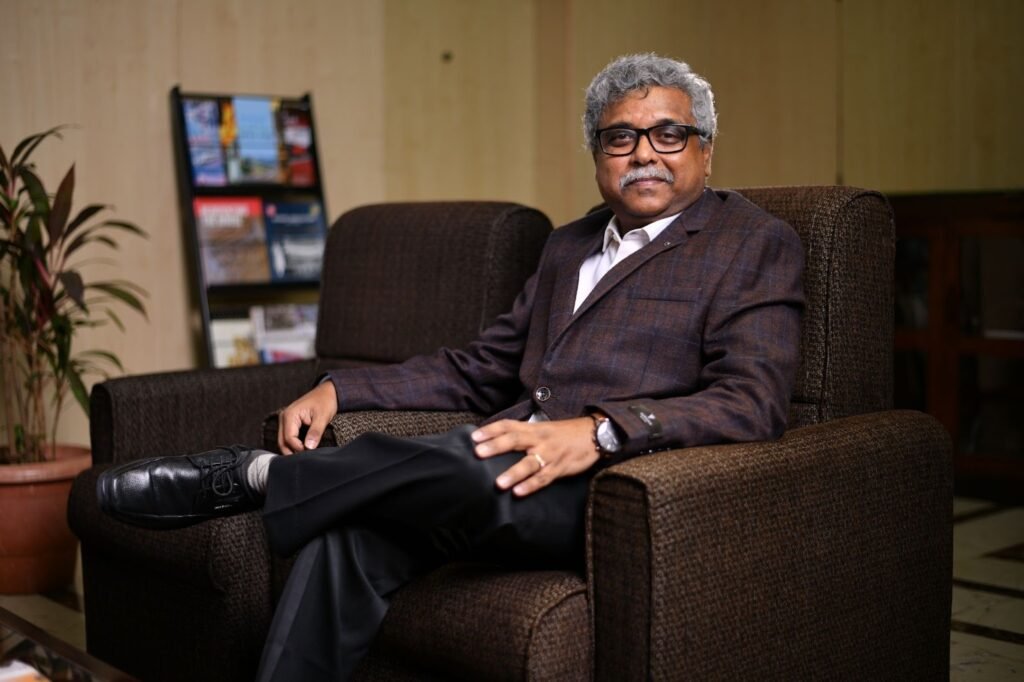
Could you share insights into your professional journey within Indian Railways? How does this experience enable you to make strategic and impactful decisions in your current role at ICF? What milestones has ICF achieved under your leadership?
I belong to the IRSME cadre (Indian Railway Service of Mechanical Engineers), so I am basically a mechanical engineer. I joined the Railways in 1989, which makes it nearly 36 years of association. I began my career in rolling stock maintenance, primarily with diesel locomotives. Over the years, I worked in several key areas, including coach manufacturing and the Rail Wheel Factory at Bangalore.
As Chief Workshop Engineer at the Wheel Shop, we achieved a record production of 200,000 wheels in a single year, a record which was not broken for more than a decade. Later, I served as Divisional Railway Manager (DRM) of Salem Division, and then as Chief Workshop Engineer at Mysore, South Western Railway.
Mysore Workshop became the first in southern India to carry out major overhauling of LHB coaches. Although ICF-designed conventional coaches were dominant earlier, LHB coaches were introduced in India about two decades ago due to safety considerations. I can proudly say that Mysore was a pioneer in the south for handling LHB coaches, which were primarily based in Bangalore for periodic overhauling.
As mentioned earlier, I worked as Chief Workshop Engineer at the Rail Wheel Factory in Bangalore, where we produced cast wheels. During that time, I was also associated with the design of cast wheels for EMU trains and later with the design development and validation process. For this, I visited the USA, where a full-load dynamometer was available for testing. Only a few places in the world have a dynamometer capable of testing wheels at full load, and one such facility is TTCI in Pueblo, Colorado, USA. I stayed there for almost two weeks to validate EMU wheels. The EMU wheels used in Trailer Coaches all over India are to this design these days.
Later, I served as Chief Mechanical Engineer (Planning) at South Central Railway, Principal Chief Mechanical Engineer (PCME) at South Western Railway, and Additional General Manager (AGM) at South Western Railway, Hubli, before taking over as General Manager (GM) of ICF. This long exposure to both technical and operational aspects of rolling stock design, development, maintenance, and passenger requirements helps me understand the pain points of common travellers. That experience is what I bring to my role at ICF.
As for ICF’s milestones, the organisation had already embarked on a new journey in 2018 with the Train 18 project, which later became the Vande Bharat Express. After the prototypes, there was a pause for design improvements. We then started production of Version 2, initially with 16-car rakes, followed by 8-car rakes.
By the time I joined ICF, production of Vande Bharat 2.0 had already started. Initially, trains were produced as 16-car rakes, followed by 8-car rakes. However, the demand soon shifted toward longer trains. We had to work with existing vendors, using the original scope of supply, to configure and produce 20-car rakes. This required some innovative negotiations with suppliers to meet the new requirements without going through lengthy tendering processes.
Today, these 20-car Vande Bharat trains are very popular, and the Railway Board has mandated that all such trains will have 20 cars. So far, ICF has produced more than 18 of these 20-car rakes, and six more are scheduled for production this year. For the Vande Bharat chair car version, the total order is 97 rakes, of which 91 have already been produced, with 6 remaining.
Could you please outline the current manufacturing capacity of ICF? How is ICF evolving to meet the growing demands of the rail transport industry?
Whenever there is a new demand or challenge in the rail sector, ICF usually becomes the fallback for executing projects. We are generally assigned such projects. For example, one such project is the Amrit Bharat train. The first version of the Amrit Bharat train was produced before I joined ICF, and it was completed with not many changes to the existing LHB coaches.
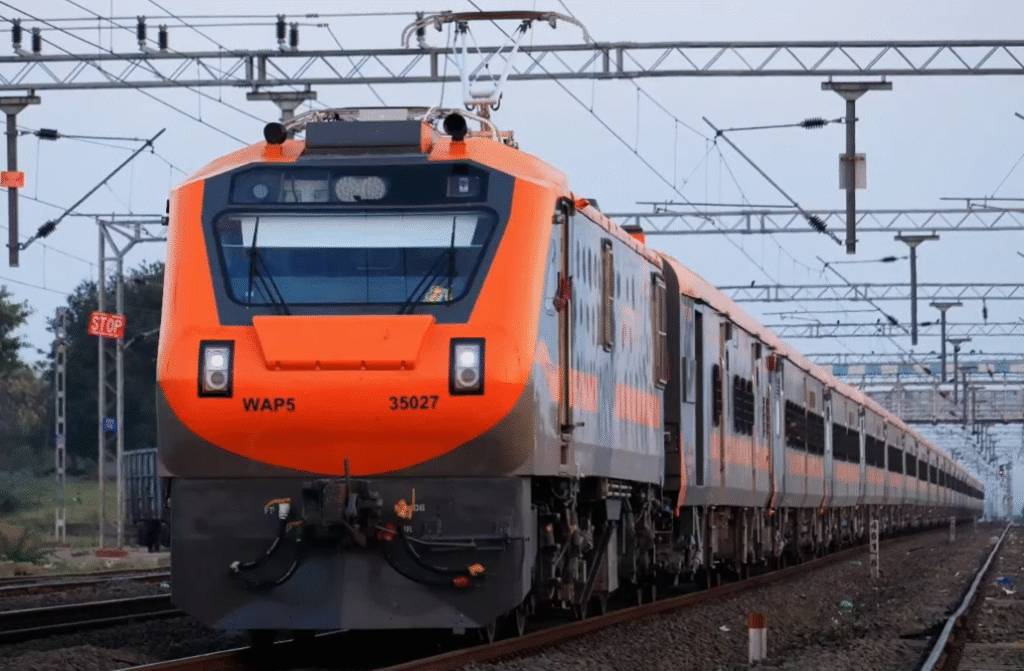
We have been assigned a project to produce 50 Amrit Bharat trains. At the same time, another 50 trains are now being produced at RCF (Rail Coach Factory), but the design for all trains comes from ICF. On the Amrit Bharat trains, we have made changes in the interiors of the non-AC coaches. The layout has been modified so that passengers experience the same seating and space arrangement as in an AC coach, even though air-conditioning is not provided. We have also made improvements to the toilets and enhanced the overall ergonomics of the coaches. These changes were implemented efficiently, and the rakes were introduced within a record time of one year. The couplers have been completely redesigned with state of the art jerk free and anti-climbing features.
Regarding manufacturing capacity, it is always a challenge. Production must align with demand, so we continuously look for innovative ways to optimise workflows and improve output. Since its inception in 1955, ICF initially manufactured almost every component in-house, from bolts to complete coaches, including processing raw materials like steel sheets. Over time, the factory shifted from this fully in-house model and began outsourcing many large sub-assemblies. ICF’s core activities, such as integration of major components and interior furnishing, are still performed within the campus, as integration requires specialised skills and ensures quality control.
To increase manufacturing capacity, we made several upgrades to the facility. The workshop layout was optimised, new machinery and robots were introduced, and automation was integrated across production processes. Additional cranes were also installed to handle larger components efficiently.
Last year, ICF produced 3,007 coaches. This year, the target has been set at 4,000 coaches. While there may be minor deviations, we are confident of achieving this target. The target for the following year is also set at 4,000 coaches.
Collectively, the three production units produce approximately 10,000 coaches each year. These include both replacements for ICF coaches being phased out, as well as new production for EMU, MEMU, and Vande Bharat trains to meet additional demand for new trains being introduced regularly.
The Vande Bharat Express has been a flagship “Make in India” initiative. Could you elaborate on ICF’s role in its development and current production? Beyond Vande Bharat, what other projects are being executed by ICF currently?
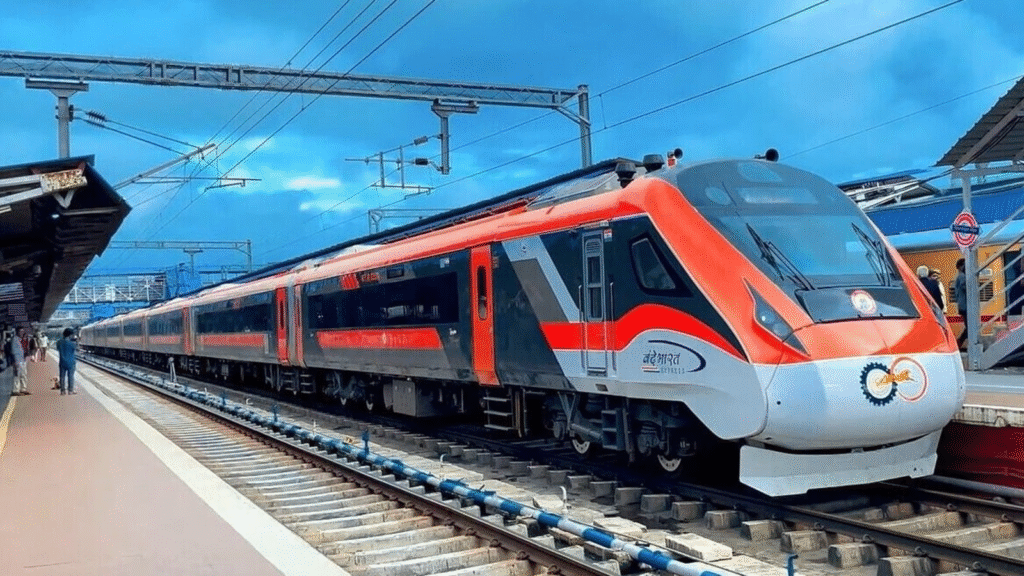
Let me give some background on Vande Bharat and how it is manufactured. Over the years, the approach to producing trains has evolved. Earlier, when ICF started producing coaches in 1955, it was based on the transfer of technology (TOT). Similarly, the production of LHB coaches also involved technology transfer from the original developers.
We also produced ALCO locomotives, which were also based on TOT. However, when it came to producing the Vande Bharat train, ICF adopted a different approach rather than relying solely on technology transfer.
For Vande Bharat, instead of relying on full transfer of technology from a single partner, we adopted a modular sourcing approach. Since ICF already had expertise in train production, we began sourcing sub-assemblies from specialised suppliers. The brake systems, doors, propulsion systems, HVAC systems, and couplers were procured from the most suitable suppliers. The bogies were developed collaboratively by ICF’s design team along with an external design agency. This approach ensures that the technology and design ownership remains with ICF. This makes Vande Bharat a distinctly Indian train brand.
Under the Vande Bharat brand, we are developing new variants, including a sleeper version. An order for 10 rakes was placed with BEML, but the complete design was developed by ICF. Only key sub-assemblies, such as propulsion systems, doors, and HVAC units, were procured externally, while BEML manufactured the car bodies. The bogies were also designed to suit the sleeper version and later integrated during assembly.

The first Vande Bharat sleeper rake has already completed oscillation trials successfully. The second rake is expected next month, and all 10 rakes are scheduled to be received by ICF by the end of the current financial year in March.
The Railway Board has also assigned ICF to produce 50 Vande Bharat sleeper trains, which will differ from the BEML version. While the BEML trains have 16 coaches, ICF’s version will be 24 coaches long and will include a separate pantry car to support longer-distance travel. To improve passenger comfort, the pantry area within each coach has been slightly reduced, and each coach will feature four toilets. Many other upgrades are also being included as compared to the rakes produced by BEML
Even small changes require major design work. The layouts have now been finalised, and tendering for sub-assemblies has begun. The first prototype is expected to be rolled out between November and December 2026. Following the prototype rollout, production of the Vande Bharat sleeper version is planned at a rate of two rakes per month.
In addition to the sleeper version, ICF is developing Vande Bharat-type freight trains. Initially, 2 freight rakes have been ordered, which are specifically designed for a 20-ton axle load, which is comparatively higher than that of standard passenger trains. This necessitates modifications to the bogies and traction motors compared to the passenger version, which results in additional development and testing time. The first freight rake is expected to roll out soon.
All the required materials for the Vande Bharat freight trains are now in place, and production has reached the final stages. Once manufacturing is complete, the trains will undergo market trials to assess their operational efficiency and commercial viability. These freight trains are intended to run on timetable-based schedules, targeting the transport of fast-moving goods for e-commerce players such as Amazon and Flipkart. They can also be deployed for long-distance freight services.
This is an experimental project assigned by the Railway Board. It aims to evaluate the performance of freight-specific Vande Bharat trains. The first rake is expected to be ready by November, with the next rake scheduled for delivery in the first week of December.
Honourable Railway Minister, Shri Ashwini Vaishnaw, recently announced that ICF Chennai will develop electronics technology for the Hyperloop project. Could you tell us more about this initiative and ICF’s capabilities in this area?
The Hyperloop project is being developed in partnership between IIT Madras and a startup, TuTr Hyperloop. As a start-up, they required support in several areas, including sourcing vendors and developing propulsion systems. ICF is providing technical guidance and assistance wherever possible, offering expertise to help them develop a high-quality product.
As highlighted by the Honourable Minister, ICF’s role is supportive rather than directive. The start-up will be responsible for producing the final train, while ICF ensures they have access to the knowledge, vendor connections, and technical advice needed to overcome challenges during the development process.
How is ICF adopting new technologies like automation and advanced welding systems to enhance its manufacturing processes and efficiency?
At ICF, we are using robotic welding in many areas, but there are still some parts where it can be added. This is a continuous process. One of our main goals is to reduce the total number of welding joints in a coach. Fewer weld joints mean less heat is applied during manufacturing, which improves the overall strength of the coach. We are also working on introducing laser welding for some parts of the coach where it is more suitable.
In wheel manufacturing, earlier the process was mostly manual, where wheels and axles had to be moved from one machine to another by workers. About 3–4 years back, we set up a fully automated wheel manufacturing line. Now, wheels and axles are fed at one end, and the line takes them through 8–9 machines automatically, with each machine having one operator. Most of the work is robotic, which saves time and gives uniform quality.
In the future, we will be looking at laser welding, unlike the conventional welding methods currently being used in some areas of the coach. The choice of welding method depends on the location and requirement, so each option has to be carefully evaluated.
How does ICF envision its role in advancing the objectives of the ‘Make in India’ and ‘Atmanirbhar Bharat’ initiatives?
The Vande Bharat train is about 90% indigenous. There is nothing in it that is not made in India. Most of the suppliers are Indian, and even in cases where some suppliers are foreign, the manufacturing is carried out in India. As per our tender documents, unless vendors meet the “Make in India” criteria, we do not consider them for procurement.
As I mentioned earlier, the Vande Bharat was developed in-house without any Transfer of Technology (ToT). This shows our capacity to design and develop advanced rolling stock independently.
I would also like to mention that the first metro trains in India, for Kolkata Metro, were also manufactured by ICF. Even today, Kolkata Metro trains continue to be built at ICF. The reason is that when the Kolkata Metro was first developed, its design and dimensions were very different from the international standards that are now followed in other metro systems such as Delhi Metro, Chennai Metro, Bengaluru Metro, and Hyderabad Metro. Since those systems follow standard international dimensions, their rolling stock is procured differently. But for Kolkata, because of its unique specifications, ICF has taken responsibility for designing and manufacturing its metro trains within our own capacity.
Currently, ICF has a strong order book because of the replacement of old ICF coaches with LHB coaches. Once this transition is mostly completed, the demand for new production will reduce, and only additional trains and replacements will continue. When the order book becomes stable in the next few years, ICF will focus on entering the international market. Our design teams are already working on this so that we have ready designs and solutions, and whenever there is a requirement, we can respond quickly.
How does ICF employ sustainable practices in its manufacturing process to minimise its environmental impact?
Power Production and Carbon Neutrality
ICF is already a 100% carbon-neutral production unit. We have invested in seven windmills, and the power we generate is supplied to the Tamil Nadu grid. In return, the grid supplies power to ICF, and the surplus generated goes back to the state grid. In addition, ICF has installed rooftop solar panels, which generate more energy than we consume. The extra power is supplied to the Southern Railway. We are also exploring the possibility of directly feeding solar power into the traction grid once the technical issues are resolved.
Water Conservation
The second aspect is water consumption. ICF is actively working to reduce freshwater usage and has set a target for a 20% reduction. Recycled water is already used extensively, and we are working to expand this further.
To support these objectives, ICF is conducting water audits, identifying leaks, and implementing measures for recycling water. Rainwater harvesting systems are also being utilised for the same purpose. A detailed study of all water inlets has been carried out, and multiple water meters have been installed to monitor consumption and manage water use systematically. These steps are part of ongoing efforts to reduce overall water usage across the facility.
Waste Management
ICF has a dedicated garbage management system and a recycling plant within its premises. All waste generated is collected and segregated into biodegradable and non-biodegradable categories. Biodegradable waste is processed into manure. The process ensures that biodegradable waste is not disposed of improperly.
Non-biodegradable waste, including metal and non-metal scrap, is handled according to the Government of India and state regulations. A proper system is in place for the disposal of all such scrap. This helps ICF to ensure compliance with regulatory requirements and maintain environmental safety.
Free EV Charging Initiative
ICF has started a program to provide free power for electric vehicle (EV) scooters, with the purpose of encouraging the adoption of electric mobility and minimising environmental impact. It is a first-of-its-kind initiative within Indian Railways. Rooftop solar panels installed at ICF premises generate the electricity, which is used for charging, and no external power is purchased for this purpose. During the daytime, the solar power is directly supplied to the EV chargers on site.
The charging system is established using smart meters and operates through a QR code-based registration process. Once registered, the users can charge their scooters without incurring any cost. This initiative is part of ICF’s broader effort to promote sustainable practices, and ICF plans to expand it to multiple locations by setting up additional charging points.
What role is ICF playing in the development of India’s first hydrogen-powered train project? How is the adoption of hydrogen-powered trains expected to influence the future of rail transportation in India?
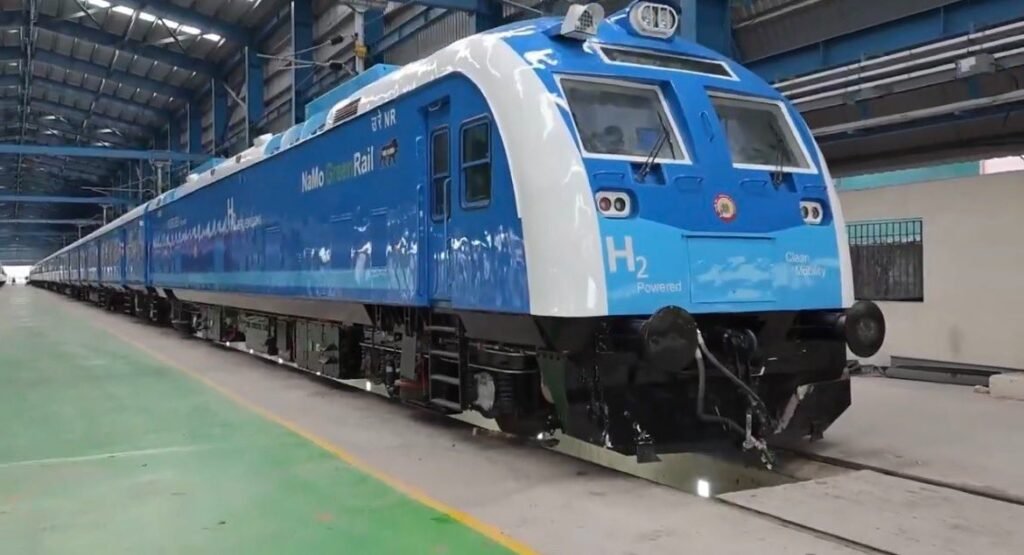
ICF has played a key role in the development of India’s first hydrogen-powered train. For this project, ICF utilised trailer coaches from an existing DEMU and produced new power cars in-house with support from a private company. This first hydrogen train has already been dispatched to Northern Railway and is expected to operate between Jind and Sonipat, where a hydrogen production plant is being set up.
The train is a full-fledged DEMU in which the conventional diesel engine is replaced with a hydrogen-powered fuel cell. The train’s normal operating speed will be 105 km/h, with no compromise on service quality. At this stage, the train functions primarily as a technology demonstrator. The purpose is to develop confidence in producing and operating hydrogen-powered trains and to study their feasibility across different routes and applications.
Hydrogen-powered traction technology is still evolving. Globally, there are two main approaches: one uses hydrogen fuel cells to generate electricity, which then powers the traction motors, and the other employs hydrogen in an internal combustion engine (ICE), similar to petrol or diesel engines, where hydrogen is combusted directly to produce power. Both approaches are being explored internationally.
These are the two main hydrogen technologies being developed globally. As I mentioned, the train currently serves as a technology demonstrator. At this stage, evaluating project costs or operational expenses is not the priority. In the next 3-4 years, it is expected that hydrogen-powered vehicles, including cars and buses, will become more common in India
The primary focus is on successful production and operation, which will allow scaling up in the future and eventually reduce costs. We need to study key aspects, which include hydrogen production, storage, and the associated logistics, and this is only possible when we run the train in real conditions. It is difficult to assess all operational parameters without deploying the train.
What is ICF’s long-term vision, and what are the key strategic objectives it aims to achieve over the next 5 to 10 years?
ICF’s long-term vision focuses on expanding its presence in both domestic and international rail markets. Domestically, the organisation aims to actively participate in the metro segment, as there is high demand for metro trains across India. ICF possesses the technology and expertise required to design and manufacture metro rolling stock.
In parallel, ICF is involved in the development and production of high-speed trains in collaboration with BEML. The designs for the initial set of high-speed trains have already been completed. High-speed trains are expected to become an integral part of India’s rail network in the coming years, and as high-speed corridors are sanctioned, several related projects are likely to follow.
Over the next 5 to 10 years, ICF plans to continue its core manufacturing of EMUs and MEMUs while gradually entering metro and high-speed train production. In addition, there is a segment for intermediate-speed corridors, which ranges from 160 km/h to 250 km/h. In this reference, certain routes may require trains which are capable of operating around 220 km/h, which presents additional opportunities for ICF.
This strategy allows ICF to serve India’s evolving rail infrastructure needs comprehensively, including high-speed, metro, and conventional rail projects, while also preparing to explore opportunities in international markets.
What message would you like to convey to the readers of Metro Rail News?
India has considerable potential in manufacturing and technology development, particularly in the rail sector. The “Make in India” and “Make for World” initiatives by the Government of India set practical objectives, and ICF has demonstrated that it is possible to design and produce trains entirely within the country, while upholding high standards of quality and safety.
Beyond trains, there are multiple areas within the rail industry where local production and innovation can be expanded. India’s large domestic market provides both demand and opportunity for scaling up production of rail vehicles, components, and associated technologies. ICF’s capabilities and achievements serve as a testimony of how these opportunities can be effectively used for the betterment of the nation.
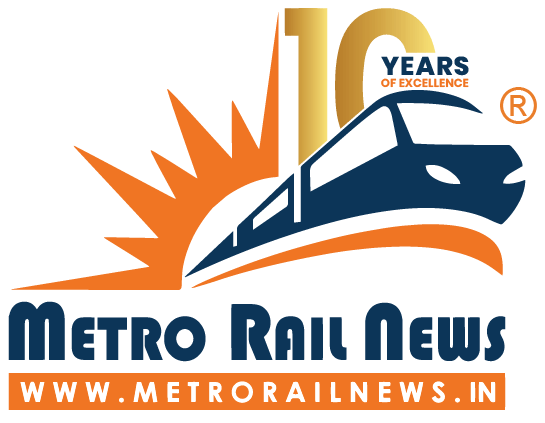

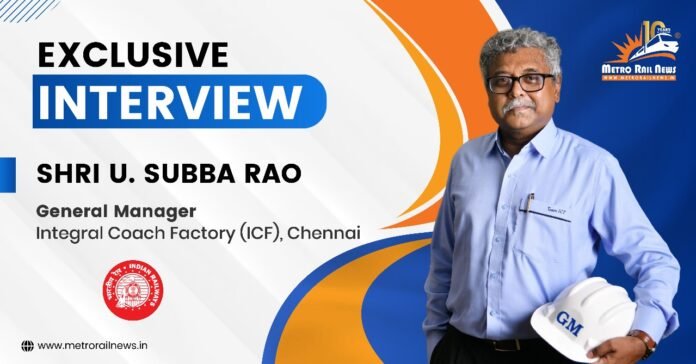

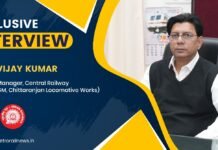
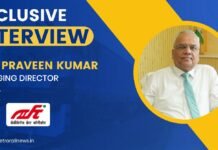
That’s a Good stuffed interview with our GM.
I’m one of the supplier of ICF.